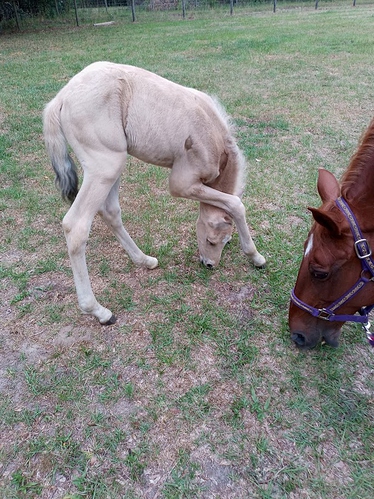My foal is doing well behavior wise. He is eating, drinking, playing, sleeping, and acting like a healthy normal foal. The vet said he may be at risk for getting a joint infection and to watch for swollen joints and lameness. This is my first foal and I’m not that familiar with what a joint infection would look like- would it be obvious? Like if I go out and he’s dead lame and the leg is double in size? or is it more insidious? He does not trot more than a step or two. He either walks or canters everywhere which makes it difficult to look for a head bob.
He’s not standing square in this picture at all so that may add some distortion. And another picture of him trying to figure out how to graze with such long legs, just because he is cute.



